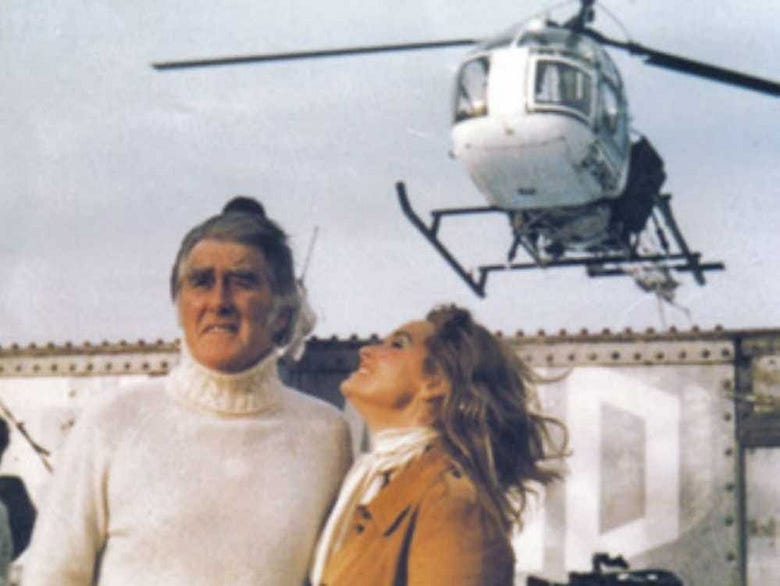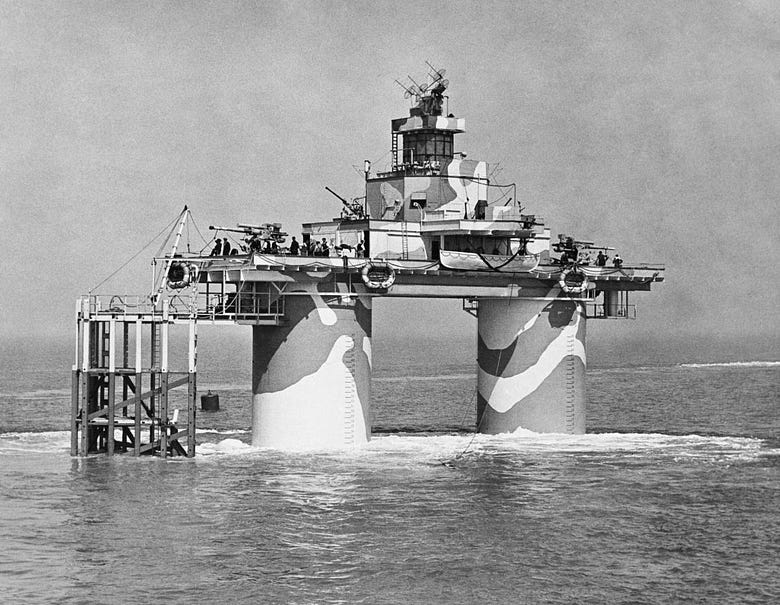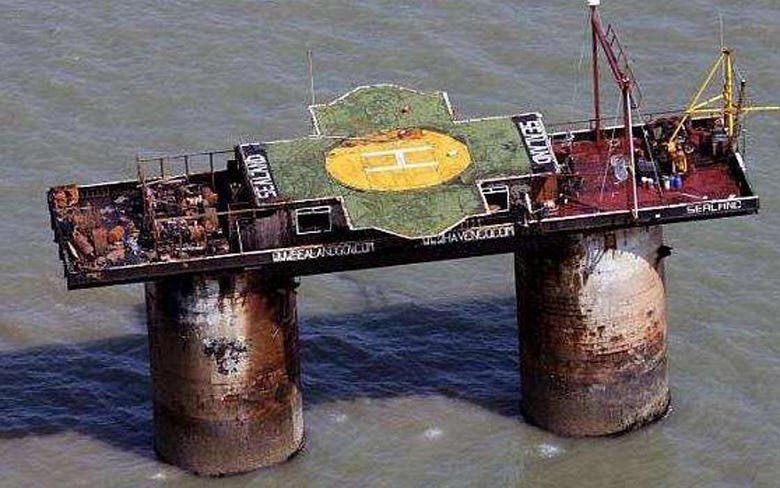
The application of international waters can be a tricky subject. For most countries, the general rule of thumb is a country’s water-boundaries extend 200 nautical miles in the seas.
- But what happens when countries are next-door neighbors?
- When their continental shelves extend way beyond the land?
- Or when a WWII relic was never torn down and sits in what used to be international waters but no longer is?
Well, that’s the case of an amusing little micronation called The Principality of Sealand located just off the coast of England.
WWII Relics
During WW2, the British government constructed several forts in the middle of the causeway between France and England. They did this to deter and combat mine-laying enemy Nazi aircraft.
One of these bad boys was called HM Fort Roughs. It used to look like this back in its prime:

Nowadays, it’s in a bit rougher shape:

It’s definitely seen some better days.
Radio
This military installation was abandoned by Her Majesty’s military in 1956 because they no longer had any use for it.
But one man’s trash is another man’s treasure, right?
And there was one group of people who thought this abandoned giant chunk of rusty metal was a hidden treasure in disguise.
They called themselves radio pirates and they were amusing.
Back in 1965, a man named Jack Moore and his daughter called up their real estate agent one day. They had an unusual request.
They wanted to pack up and ship out to the middle of the English Channel and were inquiring on the legality of doing so.
They were part of a pirate radio station called Wonderful Radio London — one of the first commercial radio stations to broadcast into the UK.
At the time, the UK only allowed government stations for a bunch of different reasons we won’t get into.
So, some enterprising individuals started out-rigging old ships just outside of UK territorial waters — and blasted unrestricted music, commentary, and news into the UK — in a legally grey area known as pirate radio.
You might think this is kind of silly and more of an act of principle than an act of entrepreneurship — but by the time they closed down they had 12 million UK listeners and four million on mainland Europe.
A listener base of 20% of an entire country’s population isn’t anything to sneeze at when it comes to advertisers.
And that’s exactly why a Texas entrepreneur named Don Pierson started this particular pirate radio station in the first place.
To make money out of a huge legal loophole.
Principality of Sealand
When Jack and his daughter ‘moved’ into the HMS Fort Roughs, they did it at the behest of the radio station.
The station was worried about three things:
- Their other location (a moored ship in international waters) might run out of space
- Their ship could suffer a government crackdown at any moment
- They might need a future ‘base’ in case things became more serious
The problem they didn’t account for was Jack wasn’t alone in his thinking.
A man named Paddy Roy Bates also had his eye on the fort and made it his (successful) mission in 1967 to acquire it.
He kicked out yet another group of pirate radio wannabes to claim the relic structure. To make matters even more ridiculous, he also had


